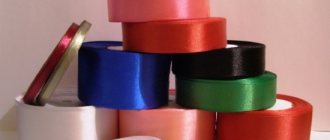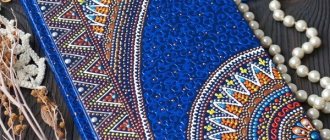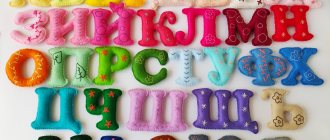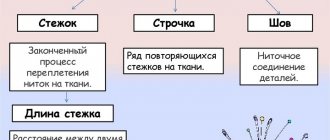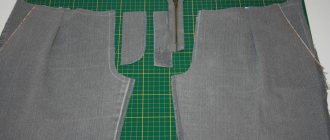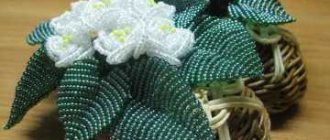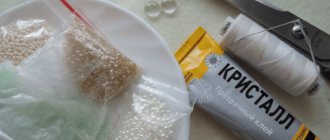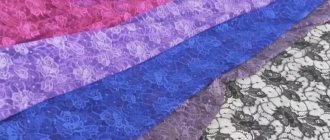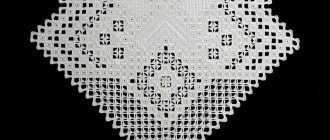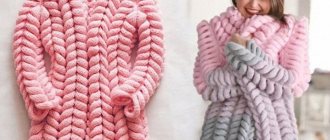Rating: No rating
Many women have a desire to sew for various reasons. Some want to sew things for themselves and their loved ones in order to save money, others want to have clothes that fit them perfectly, and still others simply want to sew something for the home, thereby creating coziness and comfort.
But not everyone knows how to sew, cut, develop a design, and cutting and sewing courses are not a cheap pleasure, so many set the goal of learning how to sew from scratch on their own.
Why you need to learn to sew and cut from scratch
- Saving. Fabrics are cheaper than finished products;
- Creative implementation. In the store it can be difficult to find ready-made clothes of decent quality, the right color, and the right fit. Having the skill of sewing a dress, you can realize the idea yourself;
The first thing you sew with your own hands will bring maximum pleasure
- Demand for the profession. It is very difficult to find a good tailor, so having a circle of regular clients, you can earn decent money. Everyone always needs clothes, repairing an old or favorite one is simply necessary;
- Wide range of applications. You can sew for yourself and your family, you can repair and customize store-bought items. The opportunity opens up to engage in textile decoration of rooms and windows. The skill will be useful in sewing quilted bedspreads and other home textiles. A craftswoman can even sew a bag and a cute backpack;
A decorative pillow can be of any texture, this will teach you how to work with different materials
- Customizing is a new life for forgotten clothes. By altering and decorating the most ordinary knitted models, you can successfully stand out from the crowd, save on buying new ones and simply bring your ideas to life;
It's easier to learn to sew by remaking old things
- Exclusive or vice versa. The skills of a tailor make a person a real creator of a unique suit. You can fulfill any of your wildest plans or repeat someone else’s with your own modifications.
Is it possible to learn to sew and cut from scratch on your own without courses?
For those who would like to learn the very basics of the specialty at home, there are ways. This will help you learn:
- lessons on websites;
- old textbooks;
- magazines with patterns and detailed instructions;
- guide sites and blogs.
An ergonomic workplace will save time during work.
The sewing process requires perseverance and a lot of practice. There is no need to choose a complex task, it is better to start with simple products, such as decorative pillows and bedspreads. We learn to cut from scratch, being patient. It is better to take the simplest fabric so that you are not afraid to make mistakes.
Further knowledge will need to be polished with practical skills. Basic and professional courses and master classes may be useful. When choosing classes, you should pay attention to the size of the group and materials that are included in the price, and study the lesson plan.
An endless number of sewing accessories will not be useful in the first couples
Video
Step-by-step sewing of a classic skirt
Half-sun skirt: Pattern in five minutes
Pencil skirt with vent
Sewing a shirt: Economical cutting of fabric, Processing nuances
Master class How to sew a women's shirt
Master class How to sew a men's shirt
Master class - sewing trousers
How not to sew knitwear: 3 most popular mistakes!
The most common mistake when sewing a dress
How to take measurements correctly
Tools needed for sewing
You only need to buy the most important things:
- Flexible measuring tape. It is used for taking measurements and must have double-sided markings starting from zero;
- Paper for patterns. To create a pattern, graph paper is used. Then it is transferred to tracing paper. The finished patterns are transferred to energy cardboard-thick paper;
Pattern paper is sold in rolls
- Tailor's chalk. It is needed for drawing contours on fabrics. Sold in different shapes, but the tip must be sharpened before use. This is necessary for clarity of lines and necessary comments;
- Scissors. The handles of tailor's scissors must be positioned at an angle with a straight blade. They must be made of stainless steel and well sharpened. For the future, you need to have several types of scissors for different types of fabrics;
The quality of the fabric cut will depend on the choice of tailor's scissors.
Please note! Careful care of scissors is required: keep dry, do not sharpen them yourself, use only for fabrics.
- A set of thin pins. They are needed to fix the pattern on the fabric;
- Needles for handwork;
Note! The thickness of the needle depends on the degree of fineness of the knitwear.
- Tool for ripping seams;
- Sewing threads.
Note! Select threads according to the composition of the fabric. For cotton - cotton threads, for synthetics - polyester.
You may be interested in Constructing a pattern and sewing children's shorts
- Steam iron and pressing materials.
There is no need to purchase a tailor's table at the very beginning; any wide surface is sufficient. But you will definitely need a decent sewing machine.
Selection of needles and threads
Before you start sewing on a machine, a beginner needs to learn how to choose the right threads and needles for a particular fabric. To sew products from light fabrics, you need thin needles, but if you sew a coat, you will need special needles for such materials. Due to incorrectly selected threads, the seams may be uneven and sloppy , and will often tear and may even cause the machine to break down.
Correct adjustment of the device is also important. The upper and lower threads should be stretched evenly and tightly, they should not be different. To check the tension, you need to take an unnecessary piece of fabric and make one stitch. Then try to rip the seam. Whichever thread breaks, that one should be relaxed. Do this until the impulses stop.
How to choose a sewing machine
Learn to sew from scratch with a simple sewing machine. The price range is very wide, this is influenced by the set of functions and the manufacturer. To understand which device to choose, just follow a few tips.
A sewing machine for beginners should not be difficult to use.
Determine your budget and explore the available options, read reviews. There are two types of sewing machines: mechanical and computer controlled. To get started, it is better to buy a mechanical one.
It would be useful to test it in the store, taking with you pieces of the simplest material. It wouldn’t hurt to pay attention to the quality of the stitches, especially straight stitches. The fabric should not curl or move to the side; this can be seen if you do not hold it with your hands. The bed stitch is one of the simplest and will be useful to test. Even the simplest model should have a regulator of the presser foot pressure on the fabric, adjustment of the thread tension and speed of work.
First lessons
After the basic lessons have been mastered, you want to make any thing. Experienced craftsmen advise a novice seamstress to sew something from home textiles:
- pillowcase;
- bed sheets;
- cover;
- potholder.
An apron will be a useful thing for the kitchen.
You can draw its pattern yourself, and the work is so simple that even a child can do it easily. But if this item is not needed, you can try sewing a straight skirt. You can make a pattern for such a skirt yourself. You just need to take measurements and decide on the length. It will take several hours to sew this model. The parts are connected to each other with needles and a mark is made. If after fitting you are satisfied with everything, you can start machine sewing.
For the first work, you need to take natural fabric, for example, cotton. It will be easier to cut, the fabric will not fray at the edges. In addition, it is inexpensive, and if the thing gets damaged, you won’t feel sorry for it.
If the first attempt is successful, you can proceed to the next , more complex, skirt model or sew another item. We must not forget that skill comes with experience and soon it will be possible to sew an evening dress or suit.
How to learn to cut from scratch
How to learn to sew and cut from scratch yourself, avoiding common mistakes. Half the success depends on taking the measurements correctly.
Scheme of taking measurements
Important! It is preferable to take measurements on the underwear that a person wears most of the time. Tights can tighten, and a bra can add volume.
While taking measurements, you need to stand straight, without bending your elbows and knees, without straining. The tape should be applied around the most convex points of the body. To correctly calculate the size of the armhole, you need to extend your arm forward and measure the distance from the shoulder to the middle of the armpit. For right-handers, the right side is measured, for left-handers, the left. Most are recorded in half size, since the body is symmetrical.
The simplest pattern is the skirt pattern. It’s best to look up how to cut correctly online, so you’ll understand the process without complicated terms. For example, crosscut is often used on knitted fabrics and for coupons. This can help if there is little material or it is difficult to work with.
What should a A-line skirt pattern look like?
Samples from magazines are useful; they are numbered by size, which makes them easier to use. There are also basic patterns there. When everything is ready, it is important to remember to leave seam allowances. This is necessary for processing seams and edges of the product. The distance between the edge of the cut and the stitching line should be approximately 0.7-1 cm.
You might be interested in this: How to quickly sew a dress on your own with and without a pattern
First of all, the running stitch is done manually. It temporarily connects the parts that will be sewn together. The length of the stitches depends on their purpose and the material itself. The hems of the product are secured with stitches, the length of which is 1-3 cm and depends on the quality of the fabric.
The technical capabilities of a sewing machine, even with a basic set of tools, will solve any problem. The main thing is to study the instructions in detail and test all functions.
Common mistakes made by beginners
Don't start sewing hastily; this will lead to mistakes the first time. You definitely need to try on the item before you start sewing. You can’t start with complex fabrics. Leather and velvet require experience. Be sure to wet-heat treat the fabric, otherwise the item will be deformed during the first wash. You need to check how the machine works, whether the settings for the type of material are correct.
It takes more than just talent to learn to sew. Purchasing the right tools and sewing machine, practicing cutting, knowing fabrics, all this will help you quickly achieve the desired result.
